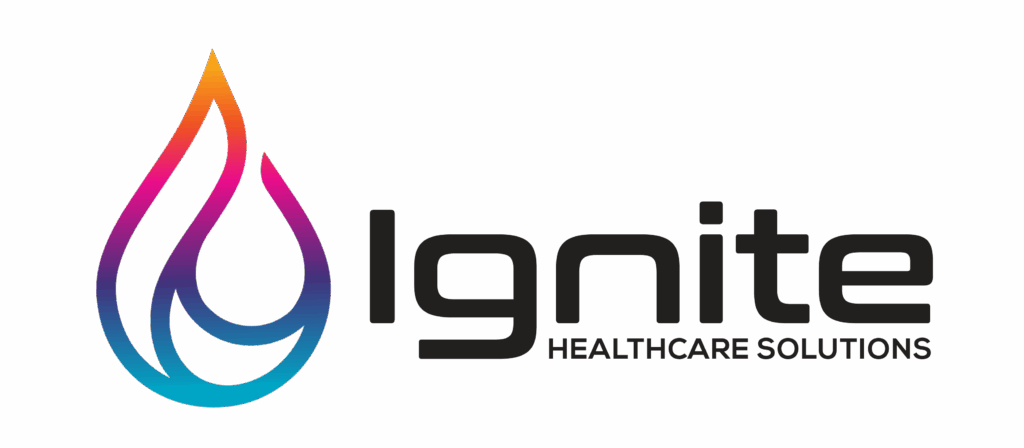At Ignite Healthcare Solutions, our mission is clear, help healthcare teams achieve more by doing less: less manual work, fewer clicks, fewer bottlenecks. We are excited to share highlights from the Fall 2025 athenahealth Release, coming the week of November 12.
This release delivers some practical improvements to existing features and some exciting new features that ease the administrative burden and enhance the patient experience. You can explore the full release at athena’s Release Workspace, but we’ve highlighted five features we believe will make the most immediate impact for practices like yours.
Top Features That Stand Out in the Fall 2025 athenahealth Release
1. Insights Executive Summary
What It Is: New reporting homepage with some classic metrics and some new metrics that you’ll want to track.
Why Ignite Loves It: Where do we start? This new dashboard provides a more curated set of metrics and a clear flow, making it much more, well, insightful. One of our favorite tabs in this dashboard is Rejections & Denials – the first time that athenahealth is surfacing these metrics for their customers.
Comparing Initial Denial Rate (an industry standard metric) and the overall Denial Rate will give you perspective on where repeat denials are happening. We are excited that athenahealth is going to continuously be updating this dashboard, so check it monthly for new metrics, better insights, and drill-downs that will give you the claim-level data you need to troubleshoot any issues.
2. Make Care Plan Goals Measurable
What It Is: You can now set up qualitative or quantitative targets for each care plan goal, and measure progress over time.
Why Ignite Loves It: This enhancement moves goal setting from vague (“improve blood sugar”) into concrete and measurable outcomes (“reduce A1c from 9.2% baseline to 7.0% by March 2026”). That clarity helps reduce ambiguity, gives both the care manager and patient a shared, objective target, and supports early identification of when a goal isn’t trending as expected so the care strategy can be adjusted proactively.
Imagine a patient in your ambulatory clinic with type 2 diabetes: baseline A1c = 9.2%, goal = 7.0% in 9 months. With this feature, you can set that goal, plug in the baseline, identify milestones (e.g., 8.0% at 3 months, 7.5% at 6 months), and then both you and the patient can see progress on the chart. This turns a care plan goal into something you can monitor meaningfully, engage the patient, and call out when the intervention needs adjustment.
3. Improved On-Demand Patient Outreach features
This is a 3-for-1, with several features that enable you to gather needed information from patients outside of an encounter:
Send On-Demand Requests for Insurance Card Images
- What It Is: From the Quickview, send a text or email to patients, requesting that they upload insurance card images.
- Why Ignite Loves It: While we’d like patients to upload card images while they’re using self-check-in, or when they check in with the front desk, that doesn’t always happen. We view this as a streamlined way for billing teams to get better insurance information, and send out claims to the right payer the first time.
Patient Forms and Screeners on Demand — Send Forms and Screeners Outside of the Encounter Workflow
- What It Is: You can now send screeners to a patient from the Quickview.
- Why Ignite Loves It: Rather than navigating to an encounter, your staff can quickly send a screener to a patient from the Quickview.
Send On-Demand Requests for Digital Patient Signatures on Privacy and Consent Forms
- What It Is: You can now send privacy and consent forms to a patient from the Quickview.
- Why Ignite Loves It: Just like the two features above, you can now easily send privacy and consent forms from the Quickview and Check-in pages, which allows you to get critical information from your patients outside of the visit.
4. Enhancements to the Diagnosis Gaps Dashboard
What It Is: This update delivers a redesigned Diagnosis Gaps Dashboard that improves how providers and staff review, act on, and track documentation of diagnoses. Users now benefit from a refreshed interface with three distinct tabs: Open, Addressed, Dismissed, the ability to view all ICD-10 codes eligible for recapture within a given Hierarchical Condition Category (HCC), and a faster workflow to add diagnosis gaps into the Assessment & Plan (A&P). Importantly, the update also removes visible Risk Adjustment Factor (RAF) weights throughout the clinical workflow.
Why Ignite Loves It: athenahealth just made it easier for you to manage and prioritize patient diagnosis gaps, saving you time and effort. For ambulatory clinics managing chronic conditions and risk adjustment workflows, this enhancement means less time clicking around and more time caring for patients. It gives a clearer clinical picture and reduces confusion. Plus, the cleaner dashboard layout—with separate tabs for open vs addressed vs dismissed gaps—makes it easier to track follow-through and reconcile documentation over time.
5. Use Automated Insurance Suggestions to Revalidate Insurance When Adding Card Image to Existing Insurance
What It Is: athenahealth was already providing suggestions when new policies were added, and this feature expands to allow the policy auto-match to run when adding updated insurance card images for existing policies.
Why Ignite Loves It: We’re excited to see athenahealth continue to expand this feature, as it saves time, reduces user error, and decreases downstream rejections and denials. Please note: This is an opt-in feature. If your practice isn’t already using it, contact your Customer Success Manager (CSM) or your onboarding project team.
Final Thoughts: From Features to Function
We wouldn’t be doing our job if we didn’t include at least one ‘gotcha’ in this release—something important to keep in mind, especially for practice managers and administrators.
24-Month Lookback Limit for Items in the Clinical Inbox
What It Is: Documents that were created more than 2 years ago will no longer show up in the Clinical Inbox. While we would strongly advocate for closing all documents in a timely manner, we know that some practices are working on cleanup projects. (We’re always happy to advise on these projects or to help with the actual work — we’d love to hear from you.)
Why Ignite Thinks It’s a ‘Gotcha’: If you monitor the clinical inbox of your users to ensure that patient visits, questions, and results are being addressed, you need to be aware that any old items won’t show up any longer. These documents won’t be closed, but they won’t show up for practice users. You’ll need to run a separate report in the Report Library to locate these.
Ignite Is Here to Help
At Ignite, we help practices translate release notes, into real operational wins, including:
- Tailored Workflow Optimization
- Custom Training & Change Management Support
- Implementation and Monitoring Strategies
Whether you’re rolling out new features, onboarding providers, or reworking legacy workflows, we’ll make it manageable and meaningful.
Explore the full set of updates at athenahealth’s Fall 2025 Release Workspace, or reach out if you’d like help bringing these features to life in your practice.
Let’s make the most of what’s new—together.
Excited about these updates but unsure where to start? That’s where we come in.



